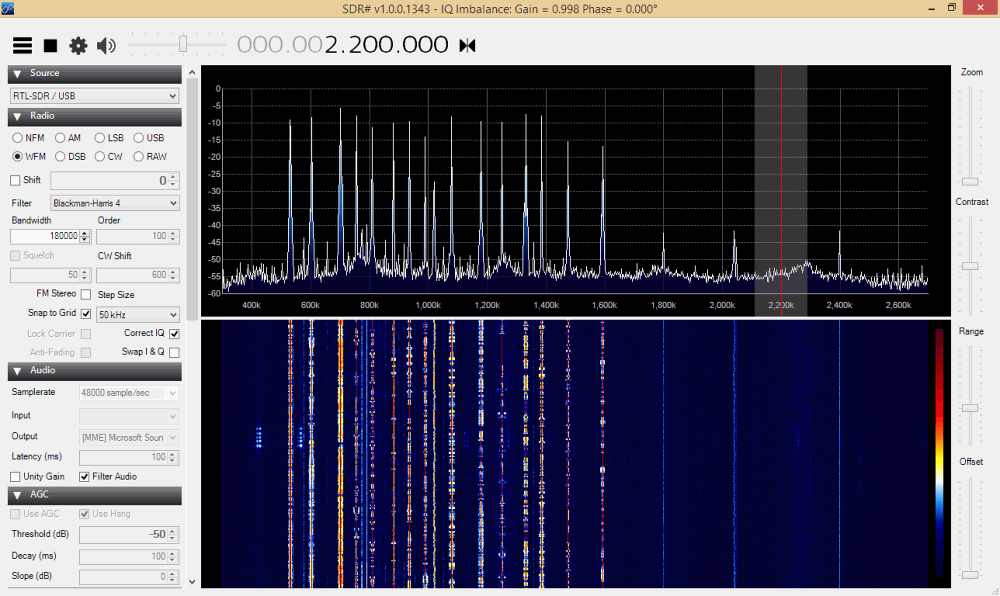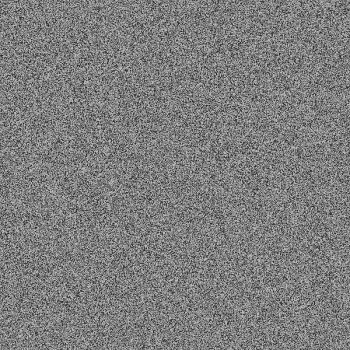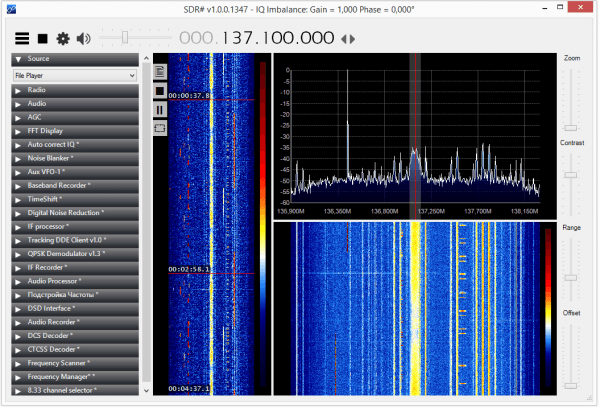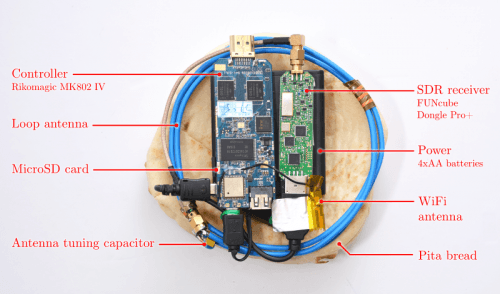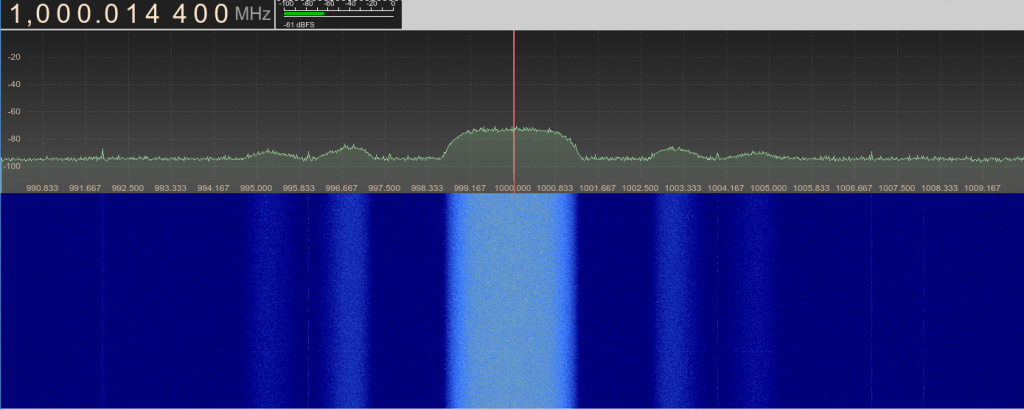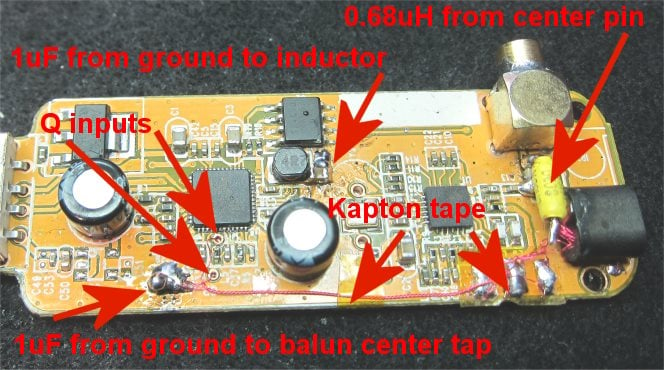Using the RTL-SDR as a Transmitter
Back in July of last year we posted about a video from oh2ftg where he showed how he was able to get his RTL-SDR to act as a crude transmitter by using the RTL-SDR’s leaky oscillator.
Now another RTL-SDR experimenter, Oscar Steila (IK1XPV) has had a similar idea to use the RTL-SDR as a transmitter, and has taken the idea further than OH2FTG did.
Oscar decided to take a standard RTL-SDR dongle and modify it so that it outputs a signal from the mixer output of the R820T tuner chip. To do this he removes some unneeded components from the PCB, and wires pin 5 of the R820T to the MCX antenna port through a 100pF capacitor. Pin 5 is connected to the mixer output from inside the R820T chip.

After performing the hack the RTL-SDR is able to output a signal anywhere between 500 MHz to 1500 MHz 1.8 GHz to 3 GHz (see why). To control the output frequency you simply need to tune to the frequency you want to transmit at in SDR# (after setting an offset to account for the R820T’s IF offset). This tunes the mixer in the R820T and causes the output frequency to change.
In the future Oscar hopes to take this idea further by creating a specific tuning application for the generator and finding a way to possibly FM modulate the output.

Update: Oscar has revised the frequency range from 500 – 1500 MHz to 1.8 GHz – 3 GHz. More information about his new tests can be found at http://www.steila.com/SDR/RFgenmod/index.html.
